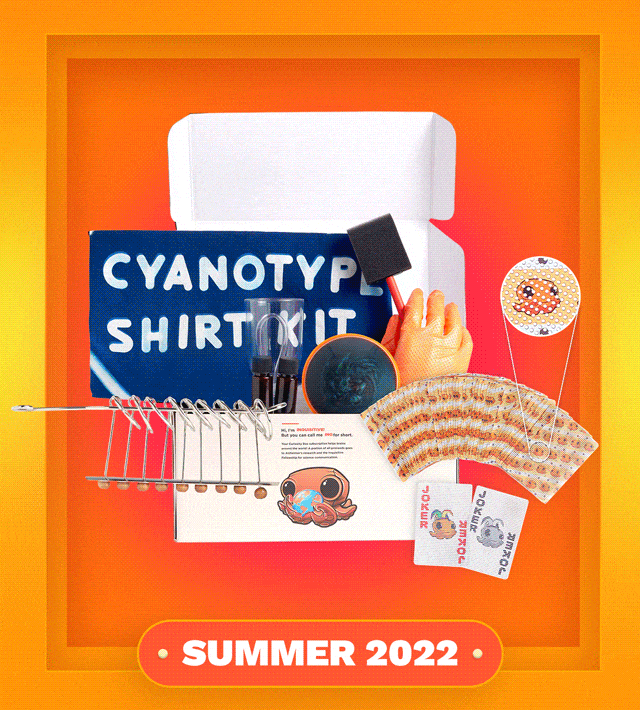Could a curved pinky that runs in the family be linked to neurodiversity? Some people think so.
Bent Little Finger Linked to Autism or ADHD?
I saw a post about bent little fingers on a facebook group for ADHD women. Almost 200 women answered as many of them had this trait.
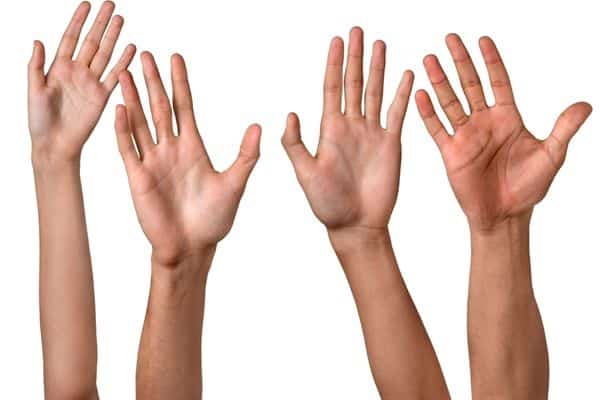
There was wide speculation as to whether a crooked pinkie finger from birth was linked ADHD or autism.
I happen to have a slightly crooked little finger, which runs in the family. The same side of my family that was described by my uncle as full of people who are ‘eccentric geniuses’.
So naturally I had to look into a possible link between a curved pinky and neurodiversity.
Curved Pinky Finger Runs in The Family
In the Facebook post many women with ADHD said that a curved pinky finger runs in their family for generations.
One woman said that her whole family has ‘the pinky’. And that the first question asked when baby is born is ‘do they have the pinky?’! She also said that there was ‘lots of adhd’ in the family.

The medical term for a crooked little finger is ‘clinodactyly of the fifth finger’. This can be unilateral (only on one hand) or bilateral (both hands).
Clinodactyly, like neurodiversity can definitely run in families. One journal listed several families with this trait passed down for generations and determined it is an autosomal dominant trait.
Here is a family tree showing that yes, curved little fingers are a genetic trait:
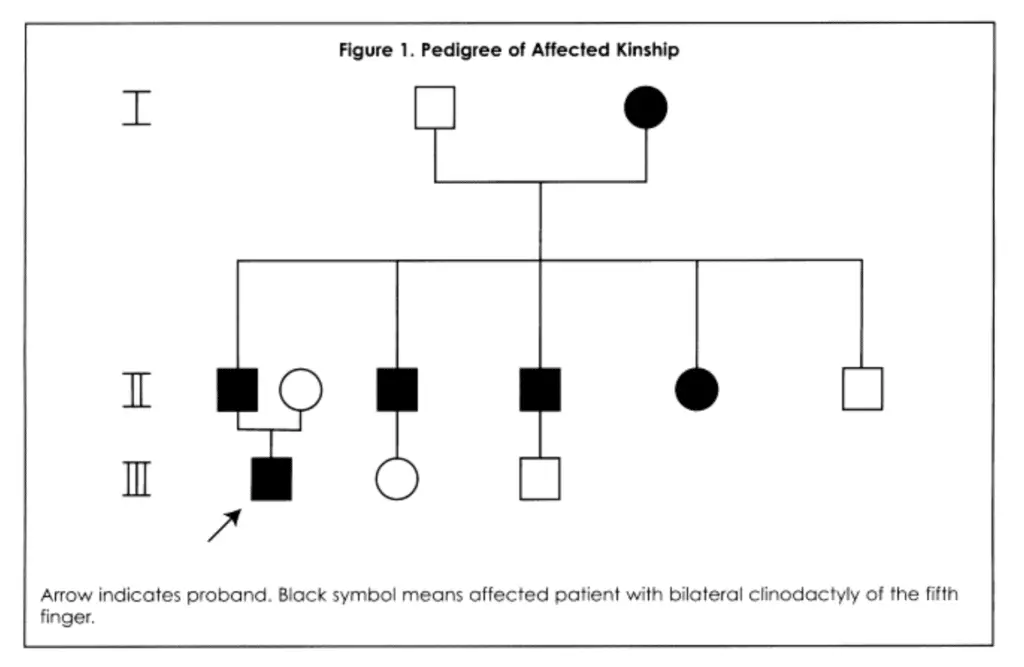

Bent Pinky Fingers Test
Do you have a bent little finger?
Here is a suggested test. Put your pinkies together side by side and see if tops of your fingers can touch or not.
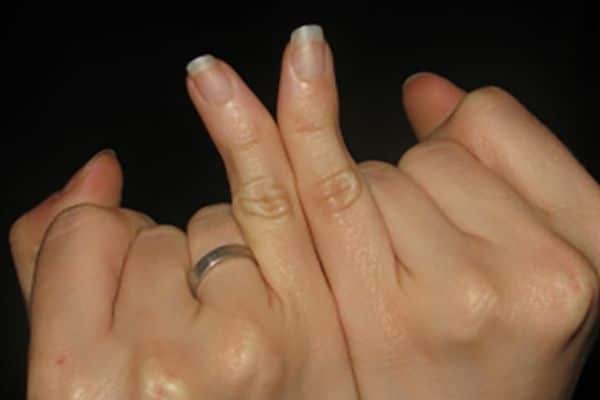
How Common are Crooked Pinky Fingers?
So, a few studies have looked at this. Reports of incidence vary between 1% and 19.5%, ‘no doubt depending on the zeal of the examiner’.
Why? Well, to study something scientifically you need to define it. How do you define a crooked/curved/ bent finger? Does it need to be a certain angle to count? Does each study use the same definition?
(FYI, these are the same problems faced when you are looking at studies on neurodiversity. How is it defined exactly?)
Apparently a 10-degree deviation is the threshold for “clinically” meaningful clinodactyly. There is no universally agreed upon standard and in many cases the evaluation is visual and subjective.
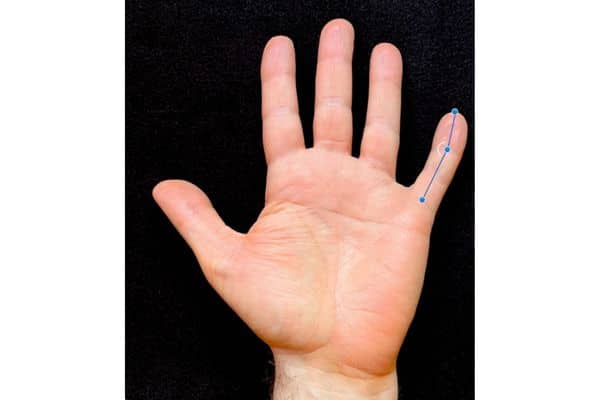
So while a ‘clinically significant’ bent finger may be rare, a ‘Hey my bent little finger looks just like Grandpa’s !’ might be pretty common.
In a study of 4412 newborns 13% of newborns had clinodactyly. 12% of these children had other major congenital anomalies, while 1% did not.
A study of over 1000 U.S. adults showed that the average curvature was 3 degrees for the right finger and 4.3 degrees for the left. Only 1% had a finger bent more than 10 degrees.
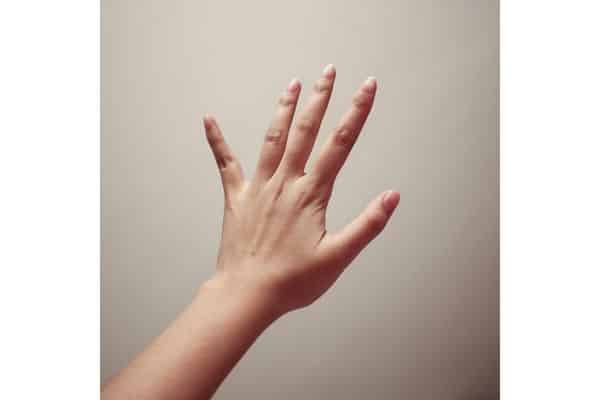
In the genetic study they noted it ‘may be more common than is presently appreciated’, as it is a ‘minor anomoly with a lack of symptoms’.
In fact, with one family studied no one noted they had a bent little finger until it was pointed out to them by the researcher!

Clinodactyly vs Camptodactyly
Wait, what? The direction of the bend matters?
Apparently so. An inward or outward bend of the finger is considered clinodactyly, as shown here in this classic medical photo:
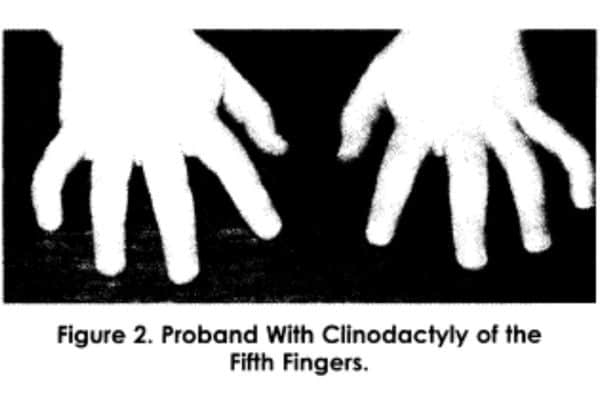
Camptodactyly refers to a finger which is fixed in a bent position at the middle joint, and cannot fully straighten.
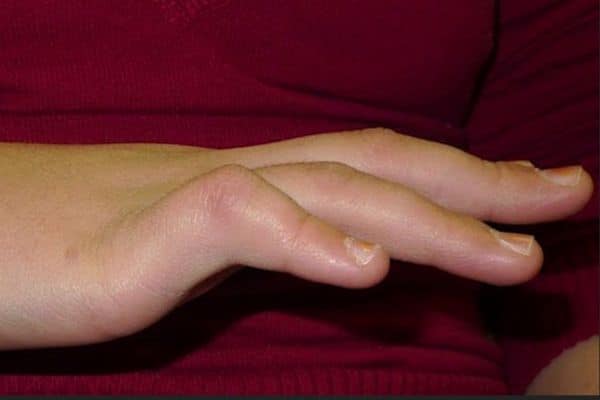
Apparently here two types of genetic camptodactyly: one that appears in infancy and affects both sexes, and the other, probably less common, which occurs in adolescent females
And obviously you can get a crooked finger after birth, which is considered acquired clinodactyly or camptodactyly.
Acquired clinodactyly can be due to physical or thermal injury to the growth plate of the bone.
Most commonly this is due to juvenile rheumatoid disease and, in northern climates, getting frostbite on your hands in your youth.


Curved Pinky Finger Linked to Genetic Conditions
Clinodactyly is most commonly an anomaly of the little finger. In most cases the bent finger is bilateral (both hands).
While some degree of bend to the little finger is common in the general population, fifth finger clinodactyly is a well known feature of several syndromes.
Here is a list of various genetic syndromes clinodactyly is linked with:
- Down syndrome
- Assrskog syndrome
- Carpenter syndrome
- Seckel syndrome
- Cornelia de Lange syndrome
- Mohr syndrome
- Silver-Russell syndrome
- Anderson-Tawil syndrome
- Feingold syndrome
- Familial Del(18p) syndrome
- Juberg-Hayward syndrome
- 22q11.2 duplication syndrome
Apparently it can also be linked to keratosis palmaris and plantaris. And there is a possible link to the cardiac condition Tetralogy of Fallot and tooth development.
Bent Pinky Finger Trait Linked to Autism or ADHD?
Ok, so back to the main question, is a bent pinky linked to neurodiversity?
On the facebook forum for women with ADHD, multiple people agreed this was a trait in their family.
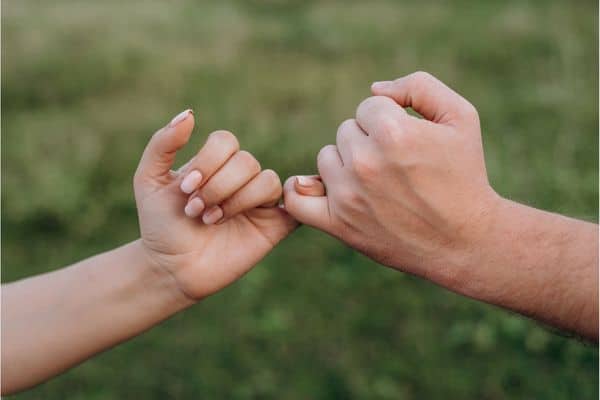
I also saw a couple of small surveys on the Wrong Planet website. Wrong Planet is a web community designed for individuals with neurological differences.
A poster had heard about this supposed link between a bent finger and autism. They had it themselves and were curious if anyone else did, they posted a survey Wrong Planet asking people if they had clinodactyly of their fingers or toes.
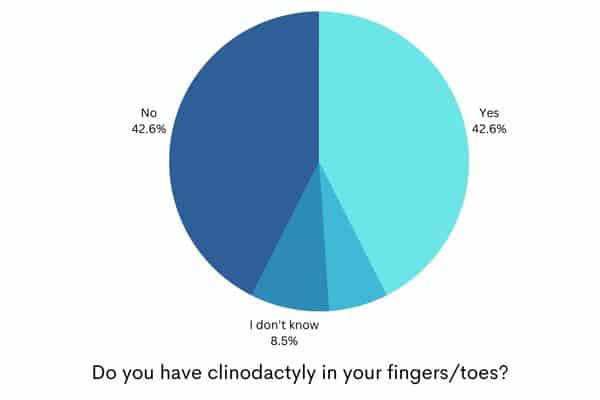
Of the 47 people who answered, 20 said that they did.
Another similar survey on Wrong Planet had 21 people answer with 10 people saying they had clinodactyly.
Now obviously these are not scientific studies. I found no scientific articles showing a link between a bent little finger and neurodiversity such as autism and ADHD (other than the major syndromes listed above).

Neurodiversity and Finger Anomalies
There are articles that describe a link between different finger length ratio and autism. A relatively shorter index finger compared with the ring finger. This is linked to the ‘extreme male’ theory of autism and androgen exposure in the womb.
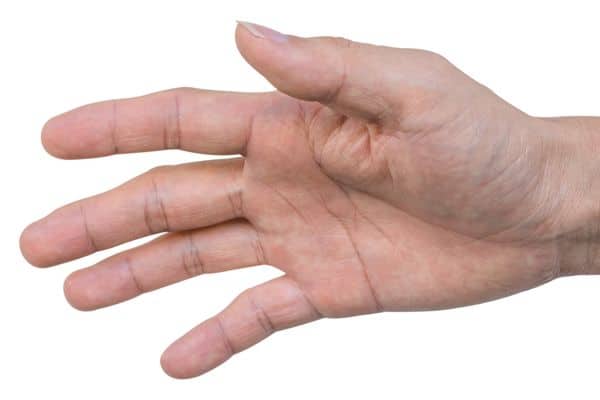
But there are no studies looking at a bent finger and neurodiversity (other than as part of a major syndrome).
One problem with designing a study are the definitions. How crooked does the finger have to be? But more importantly: How is the neurodiversity defined?
This is a major issue with neurodiversity studies.
Certainly the understanding of neurodiversity has changed in the last few years, with the realization that neurodiversity exists on a spectrum. But for scientific studies the DSM criteria is often used, with it’s more rigid definition.
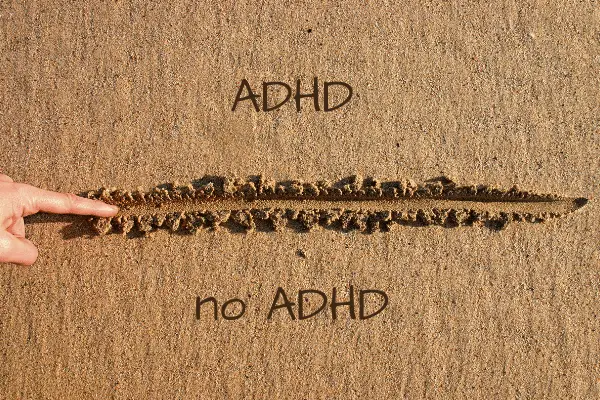
The informal surveys were all made by adults, many of whom are self defined as ADHD or autistic. And were interested in looking for little quirks and traits that might be linked to neurodiversity (like adhd ‘object permanence’ or body focused repetitive behaviours like scalp picking or cheek chewing.)
Of course it is not really surprising that this would not be studied scientifically. (Although you’ve gotta wonder how the finger length studies started. And whether they could go back to photographs or xrays used for these studies and look for crooked little fingers.)

Crooked Pinky Finger Meaning in Palmistry
Ok. Clearly this is not scientific, but I thought I would include this for interest.
In palmistry, the pinkie finger is called the ‘mercury finger’. This is in reference to the planet Mercury. The mercury finger represents communication, intuition and relationships with others.

Cheiro’s Language of the Hand describes the little finger. When it is well shaped and long, is said to indicate the power of the subject to influence others. When very long, it shows great power of expression in both writing and speaking; its owner is more or less the savant and philosopher.
When the little finger is quite obviously isolated from the others a difficulty in relationships must be immediately suspected.
Illustrated History of Palmistry
It is believed that when the little finger is shorter than the top bend of the index finger (Apollo finger), this person will have a harder time expressing themselves.
They may also tend to give themselves a hard time if they perceive they have failed at something.

It is also felt that if the little finger is bent or twisted, it reveals someone who can be manipulative. If the pinky finger curves in toward the ring finger, then this person is prone to lying.
In chinese astrology the little finger represents water in the Five Elements. It represents a person’s social skills, talent, wealth, and ability to handle things.
It is considered very fortunate to have a straight and long little finger. A distorted and short little finger can mean bad luck and poor health in old age, and the need to pay attention to care of the respiratory system or gastrointestinal system.
If we are considering that there might be a link between a bent little finger and ADHD or autism, palmistry linking it to poor communication, difficulty in relationships and intuition is very interesting.
Crooked Little Finger in Medieval Paintings
A surprising detail: people have studied crooked little fingers in paintings!
Here are images of different Renaissance artists’ paintings in the Metropolitan Museum of Art in New York City:
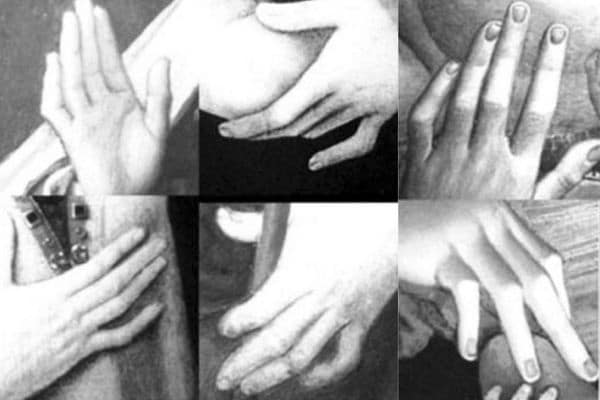
They wondered if the same person with a crooked finger had sat for several paintings due to their campotodactyly finger anomaly.
But that was not the case as they saw it in so many paintings. Eventually they decided that it was likely the fashion at the time to have a bent little finger.
So they you go. Whether your bent finger is linked to neurodiversity or not is still a big question.
But it has been decided that your hands are the height of fashion for a Renaissance painting.

References
- Familial clinodactyly of the fifth finger.
- Bent pinkies: Quantifying fifth finger clinodactyly in a sample of U.S. adults
- The troubles with pinkies
- Differences in finger length ratio between males with autism, pervasive developmental disorder- not otherwise specified, ADHD, and anxiety disorders
- The Renaissance fifth finger
- Three saints with deformed extremities in an Italian Renaissance altarpiece

